Recipe for Increasing Milk Supply
If the mother is interested in increasing her milk supply and is not adverse to the idea of domperidone and herbs, here is a recipe for success.
If you are already on one of the Newman-Goldfarb Protocols, skip to step 2.
- If the mother is an adoptive breastfeeding mother or an intended mother and is not already taking domperidone, it is a good idea to have a look at the Accelerated Protocol now.
- If the mother has a medical contra-indication for taking the birth control pill she may want to consider domperidone and herbs alone. She can start with domperidone 10 mg 4 times a day for 1 week and then if she is not too tired and her stomach isn’t too upset, increase the domperidone to 20 mg 4 times a day. It’s a good idea to take domperidone 1/2 hour before meals and at least an hour before pumping. The mother should not start the herbs until she is comfortable with the domperidone...have her wait at least a week at the maximum dose of domperidone before adding the herbs or the mother can get a really upset stomach. And if the mother is already taking herbs...have her stop until she is comfortable with the domperidone.
- The mother should empty the breasts 8 to 12 times in 24 hours by either pumping, breastfeeding or both. She can keep a cooler with an ice pack by her bed at night so she can hand express (see appendix 1) her milk (if pumping is not an option) into a bottle and keep it in the cooler until morning when she can transfer it into a bag and either use it in the supplementer if she is breastfeeding or freeze it. You can also use this cooler idea at work if you don’t have a fridge available to you. Freeze the milk when you get home or use it in the Lact-aid. Keep in mind that it may take a while for your breasts to get the message. You could be pumping and getting very little for days and then suddenly...boom you have a lot more milk!
- When the mother is ready to add the herbs, the recommended dosages are: Fenugreek seed (610 mg per capsule) and Blessed Thistle herb (390 mg per capsule). 3 capsules of each, three times a day with food.
- Drinking water to thirst is good for milk supply as it prevents dehydration from the body’s normal excretions. Avoid caffeine, it’s a diuretic.
- Many of the women on the protocols have found that eating oatmeal for breakfast 3 times a week is good for milk supply.
- Above all, if the mother is breastfeeding, the number 1 most important thing is to have a good latch and position. If the baby is not Starting Out Right, he/she will not be able to get the milk that is available no matter how much the mother has. It is a good idea to work with an International Board Certified Lactation Consultant who will check the baby’s latch and suck as well as teach the mother how to use the supplementary feeding device.
According to Dr. Newman, "When a baby is getting milk (he is not getting milk just because he has the breast in his mouth and is sucking), you will see a pause in the chin after he opens to the maximum and before he closes, so that one suck is (open mouth wide-->pause-->close mouth). If you wish to demonstrate this to yourself, put a finger in your mouth and suck as if you are sucking on a straw. As you draw in, your chin drops and stays down as long as you are drawing. When you stop drawing, your chin comes back up. This pause in the chin represents a mouthful of milk when the baby does it at the breast. The longer the pause, the more the baby got. Once you know that, you know also when he is notgetting milk. And once you know that, you know that 20 minutes on each side, for example, is nonsense. A baby who does this type of sucking (open mouth wide-->pause--close mouth), steadily for 20 minutes won’t take the second side. A baby who nibbles for 20 hours will come off the breast hungry."
- If the mother has to supplement the baby’s feedings, she should use a supplementary feeding device. This will help her milk supply while at the same time keep her baby breastfeeding. It may seem silly to state the obvious but a baby learns to breastfeed by breastfeeding. If the bottle is introduced, it will teach the baby that there is another way to get nourishment which can cause a problem at the breast. This doesn’t mean the mother can’t ever go out and leave her baby with a caregiver to handle a feeding. Consider other ways of supplementing such as the infant cup and limit outings entirely in the first 6 weeks and to a maximum of once in 24 hours in the next 6 weeks to 3 months. Breastfeeding a baby takes commitment and time. The rewards are worth the effort!
- Don’t make yourself nuts over this. There is more to breastfeeding than breastmilk. Your baby only needs a small amount of breastmilk with each feeding in order to benefit. For more information on increasing milk supply, see “Dr. Newman’s Protocol for Not Enough Milk" at this site: breastfeedingonline.com.
